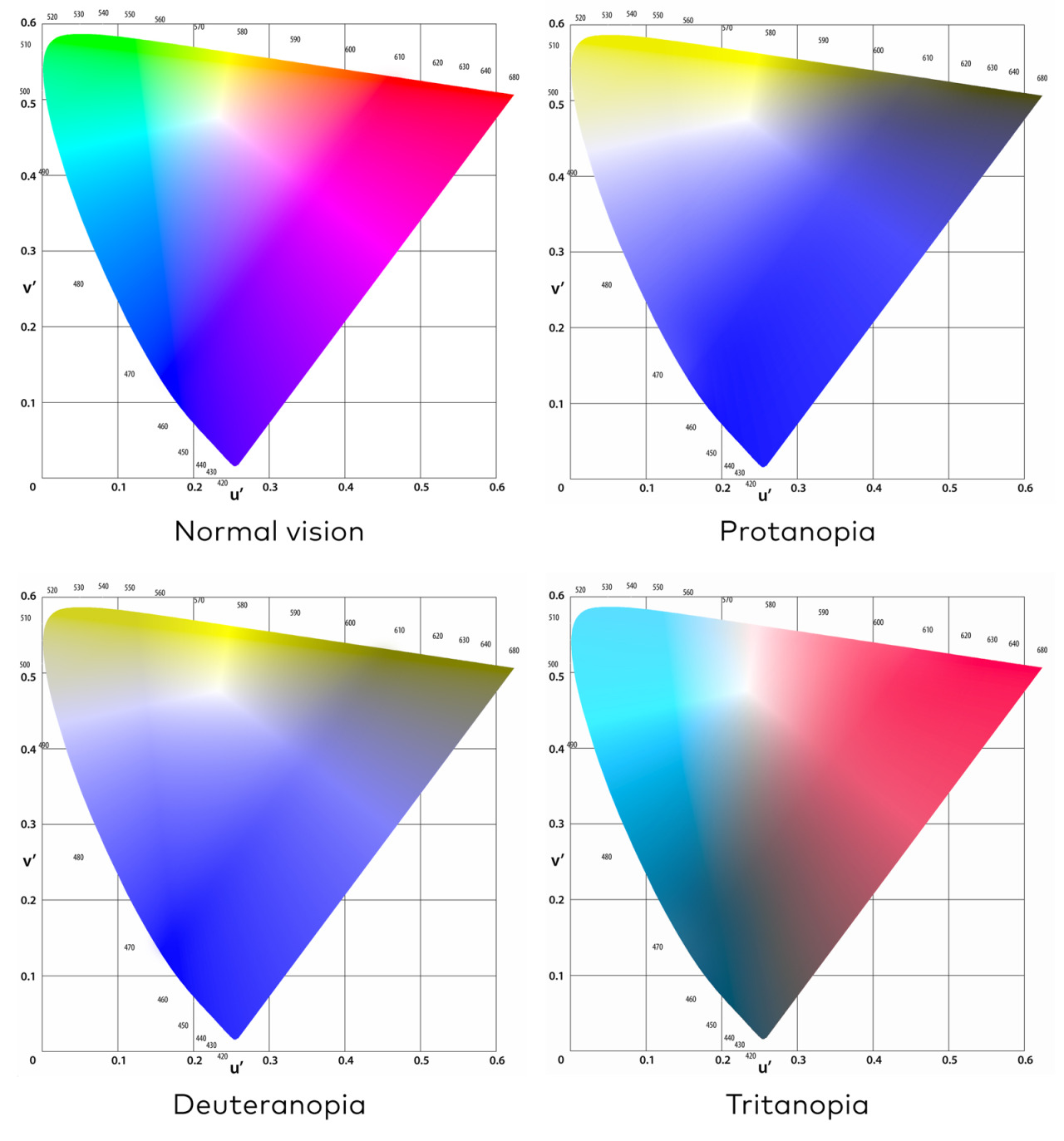I understand that dichromats have one of their cone missing/not functioning. And as for Monochromats, 2 or all of their 3 cones are missing/not functioning. And I read from Wikipedia - Color Blindness :
Dichromacy occurs when one of the cone pigments is missing and color is reduced to two dimensions.
and
Monochromacy occurs when two or all three of the cone pigments are missing and color and lightness vision is reduced to one dimension.
Since in the description they relate the cones with Red, Blue, Green (RGB) a lot, eventhough I'm fully aware that relation of cones and RGB is most likely for historical reason . I'd like to assume in this reduction from 3-dimensional into less dimensional colorspace dimension written in Wikipedia based on RGB colorspace.
This is original RGB colorspace in 3-Dimension
Question 1 : How exactly reduction from 3-dimensional to 2-dimensional or even 1-dimensional in colorblind case happen ? For example in Protanopia, would they lose the Red axis ? So only Blue and Green axis left ? (Any reference will be appreciated).
I also read this question If people with colorblindness lack one type of cone cells, shouldn't they be unable to recognize one particular color?. And it's written that Dichromats can match any color they see with some mixture of just two primary colors. Cones do not literally interpret colors. The three cones work together to encode a signal.
Question 2 : If cones don't really interpret any color in human color vision system. Is it wise that losing cone means reduce from 3-dimensional color into 2-dimensional by completely erase the corresponding color axis to the cone ?
[UPDATE]
For Question 1 :
Taken from the book Visual Transduction and Non-Visual Light Perception (p308),
Univariance, Monochromacy, Dichromacy, and Trichromacy
If only one photoreceptor type operates, vision is monochromatic or reduced to a single dimension
If only two cone photoreceptors operate, vision is dichromatic or reduced to two dimensions
and
Most observers with normal color vision have three classes of cone photoreceptor and are therefore trichromatic.
So, I'm sure in my Question 1, they really refer to Young–Helmholtz Trichromatic theory. A theory when human color vision possess 3 types of cones thus they have three dimensions of color vision.
However, I still need some opinion related to Question 2. Any comments will be appreciated.



